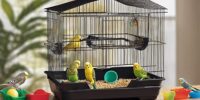Male Vs. Female Budgerigars: Differences in Behavior and Care
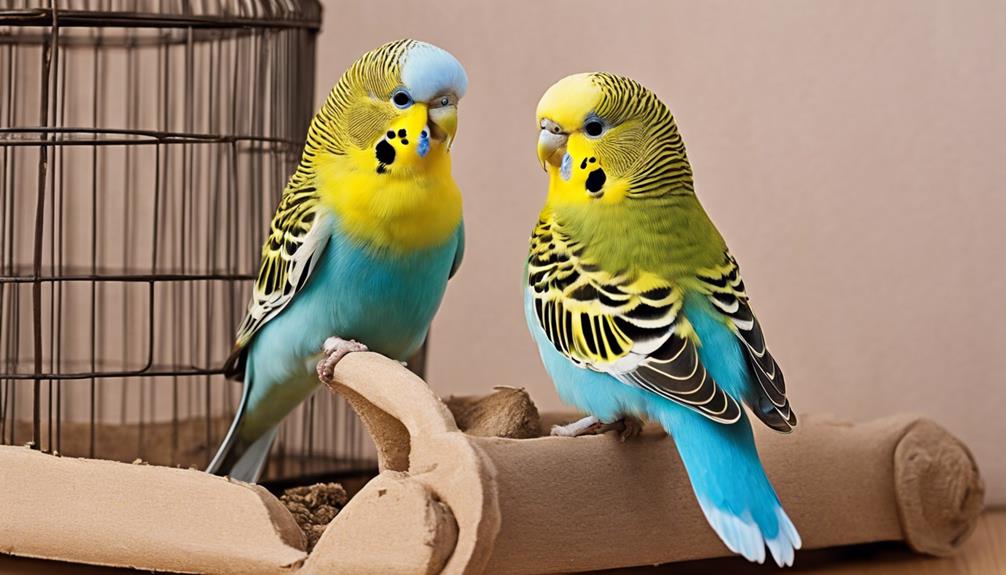
Male and female budgerigars have some key differences in behavior and care. In terms of behavior, male budgerigars are often more vocal and prone to mimic sounds and speech. They may also be more territorial and assertive. Females, on the other hand, tend to be quieter and more reserved. In terms of care, females may require additional calcium supplements to support egg laying, while males do not have this need. It is also important to monitor the health of female budgerigars during breeding season to ensure they do not become stressed or over-burdened. Overall, understanding these differences can help owners provide appropriate care for their male and female budgerigars.
Physical Differences Between Male and Female Budgerigars
Male budgerigars typically display more vibrant plumage colors compared to their female counterparts, making it easier to differentiate between the sexes at a glance. The color differences are quite striking, with males showcasing bright blues, greens, and yellows, while females tend to have more subtle hues of these colors. This distinction is particularly helpful for breeders and pet owners who want to identify the gender of their birds accurately.
In addition to color variations, there are also size differences between male and female budgerigars. Generally, male budgerigars are slightly larger in size compared to females. This disparity is more noticeable in the head and neck area, where males typically have broader heads and thicker necks. These size variations can be useful when trying to determine the sex of budgerigars, especially in cases where the color differences may not be as pronounced. Understanding these physical variations can aid in providing appropriate care and meeting the specific needs of male and female budgerigars.
Behavioral Variances in Male Budgerigars
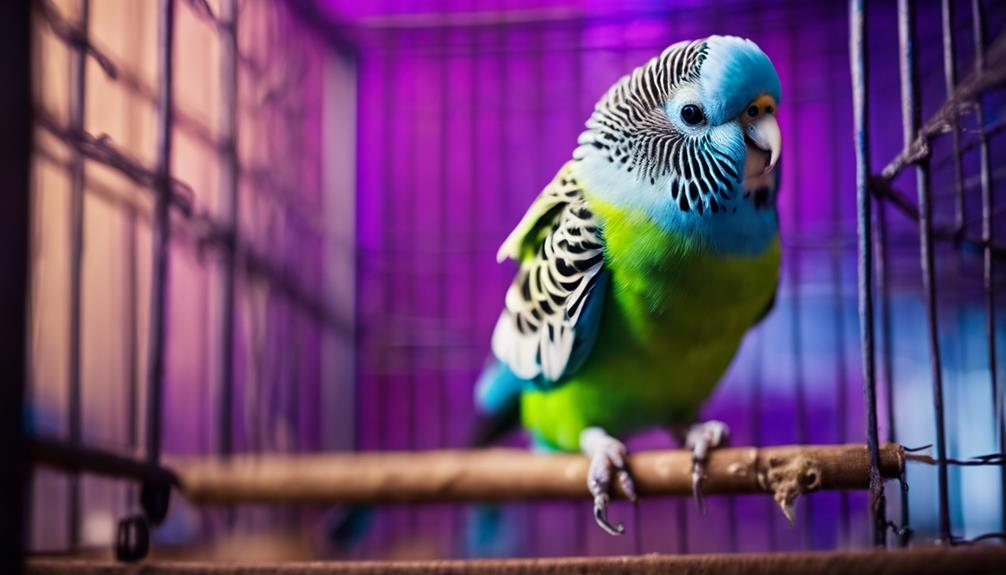
The physical differences between male and female budgerigars extend beyond just size and coloration, impacting various aspects of their behavior as well. When considering male budgerigars specifically, there are noticeable behavioral variances that set them apart:
- Courtship behaviors: Male budgerigars are often more proactive in initiating courtship rituals. They display behaviors like bobbing their heads, singing, and feeding the female as part of their courtship displays. These behaviors are essential in attracting a mate and establishing a bond.
- Vocalization differences: Males tend to be more vocal than females. They exhibit a wider range of sounds, including melodious tunes and chirps, especially when trying to attract a mate or communicate their needs. Their vocalizations play a crucial role in social interactions and courtship rituals.
- Aggression towards rivals: In some instances, male budgerigars can display territorial or aggressive behaviors towards other males, especially when competing for a mate or defending their territory. Understanding these behaviors can help owners provide appropriate socialization and enrichment for their male budgerigars.
Behavioral Variances in Female Budgerigars
Female budgerigars typically exhibit distinct behavioral patterns that differentiate them from their male counterparts, showcasing unique characteristics in their interactions and social dynamics.
In terms of feeding preferences, female budgerigars may display a preference for specific types of seeds or fruits, showing individual variations in their diets. Their activity levels often vary, with some females being more active than others, engaging in playful behaviors or exploring their environment more actively.
Vocalization patterns among female budgerigars can differ from males, with some females being more chatty or having unique chirping styles. When it comes to sleep habits, female budgerigars may exhibit variations in their sleeping patterns, with some preferring to rest earlier or later in the day compared to males.
Understanding these behavioral differences in female budgerigars can help pet owners provide tailored care and enrichment to ensure the well-being and happiness of their feathered companions.
Social Interaction Variances
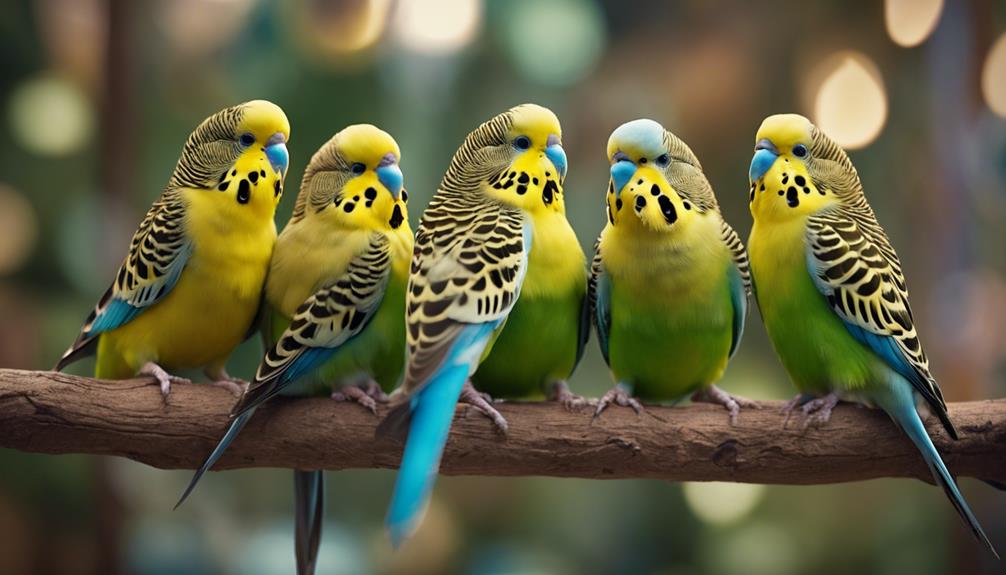
In social settings, budgerigars exhibit variances in their interaction patterns that reflect their unique personalities and communication styles. Understanding these differences can help bird owners provide appropriate care and enrich their pets’ lives.
- Vocal Communication: Budgerigars are known for their exceptional vocal abilities. While both male and female budgies can mimic sounds and words, males are often more vocal and inclined to mimic a wider range of sounds. Females may communicate through softer chirps and trills, using their vocalizations more subtly compared to the males.
- Social Hierarchy: Budgerigars establish a social hierarchy within their flock. Males and females may display dominance behaviors, such as puffing up their feathers, vocalizing loudly, or engaging in beak fencing. Understanding these dynamics can help bird owners create harmonious living environments for their pets.
- Interaction Styles: Male budgerigars tend to be more outgoing and adventurous in their interactions, while females may exhibit more cautious or reserved behaviors. Observing and respecting these differences can help foster positive relationships with your budgerigar companions.
Reproductive Variances and Considerations
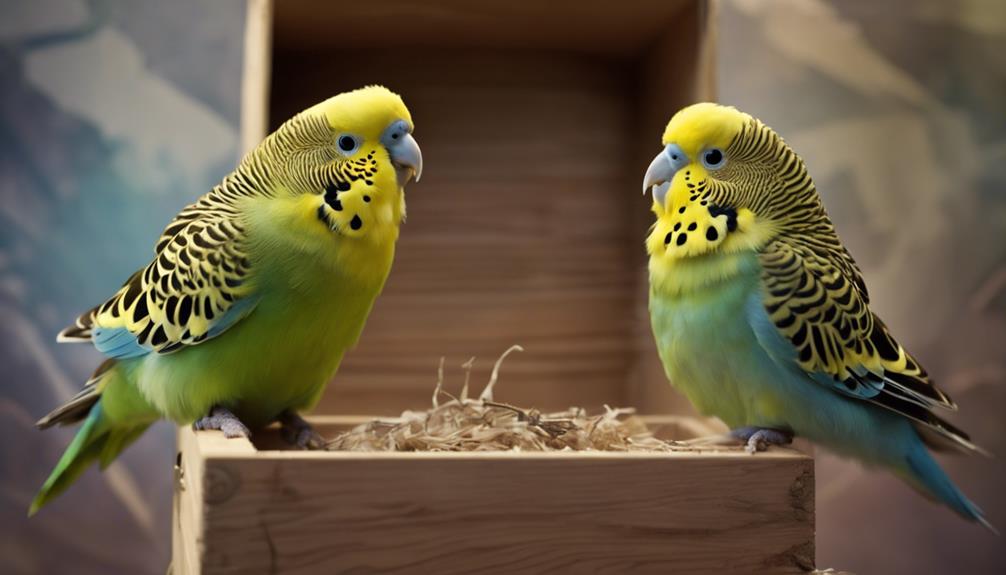
Budgerigars exhibit intriguing mating behavior variations, with differences in courtship rituals and mate selection between males and females. Additionally, their nesting habits showcase a diverse range of strategies, from selecting nesting materials to constructing intricate nests.
Understanding these reproductive variances and considerations can provide valuable insights into the breeding and care of these colorful birds.
Mating Behavior Variations
When observing mating behavior variations in budgerigars, breeders and researchers have noted distinct patterns that reflect reproductive variances and considerations. Male and female budgerigars exhibit unique courtship rituals and breeding habits that play crucial roles in their reproductive success:
- Courtship Rituals: Male budgerigars often display courtship behaviors such as singing, dancing, and feeding the female to gain her acceptance for mating.
- Breeding Habits: Female budgerigars are selective about their mates, evaluating the male’s courtship efforts before choosing a partner. Once a pair bonds, they engage in mutual preening and nest-building activities.
Understanding these mating behavior variations is essential for successful budgerigar breeding and ensuring the well-being of the birds.
Nesting Habits Diversity
Observing the nesting habits diversity in budgerigars reveals a spectrum of reproductive behaviors and considerations that play a vital role in their breeding success. Budgerigars exhibit varied preferences when it comes to nesting materials and locations. During the breeding season, these small parrots showcase distinct behaviors that are crucial for successful reproduction. Understanding these nesting habits can help breeders provide optimal conditions for their budgerigars to thrive. Below is a table highlighting some common nesting material choices for budgerigars:
| Nesting Material | Description | Suitability |
|---|---|---|
| Wood shavings | Natural material for nesting | High suitability |
| Paper strips | Easy to shred and manipulate | Moderate suitability |
| Dried grass | Mimics natural environment | Low suitability |
Health Care Specifics for Males
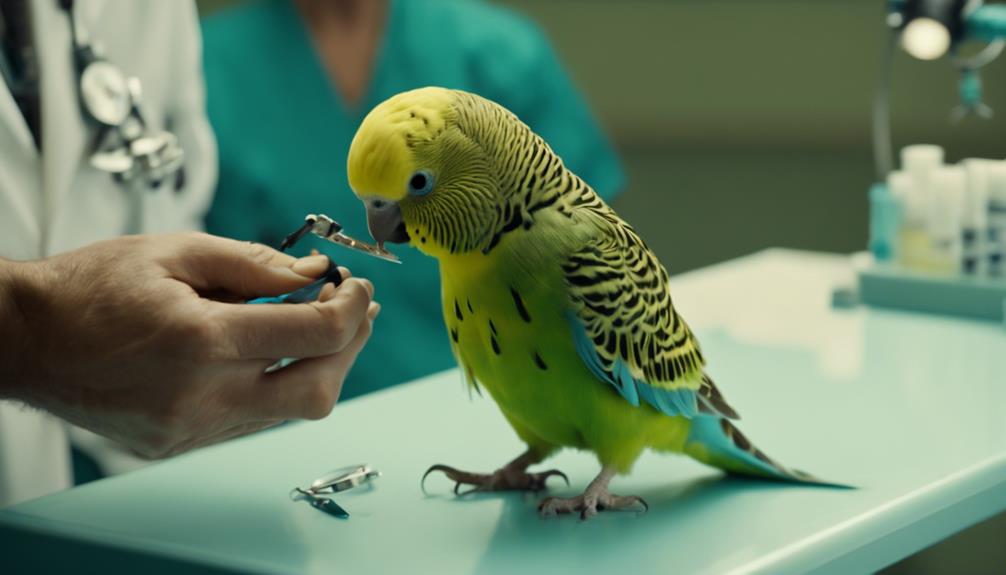
Male budgerigars require specific health care tailored to their unique physiological needs, ensuring optimal well-being and longevity. To provide the best care for male budgies, consider the following:
- Nutrition Requirements: Male budgerigars have specific dietary needs that should be met to maintain their health. A balanced diet rich in seeds, pellets, fresh vegetables, and fruits is essential for providing them with the necessary nutrients. Additionally, calcium supplements can be beneficial to support their bone health.
- Exercise Needs: Regular exercise is crucial for male budgies to stay healthy and active. Providing them with ample space to fly and explore is essential. Interactive toys and perches can also encourage physical activity and mental stimulation, promoting their overall well-being.
- Regular Veterinary Check-ups: Scheduling routine check-ups with an avian veterinarian is vital to monitor the male budgerigar’s health status. These check-ups can help detect any health issues early on and ensure timely intervention, contributing to a longer and healthier life for your feathered friend.
Health Care Specifics for Females
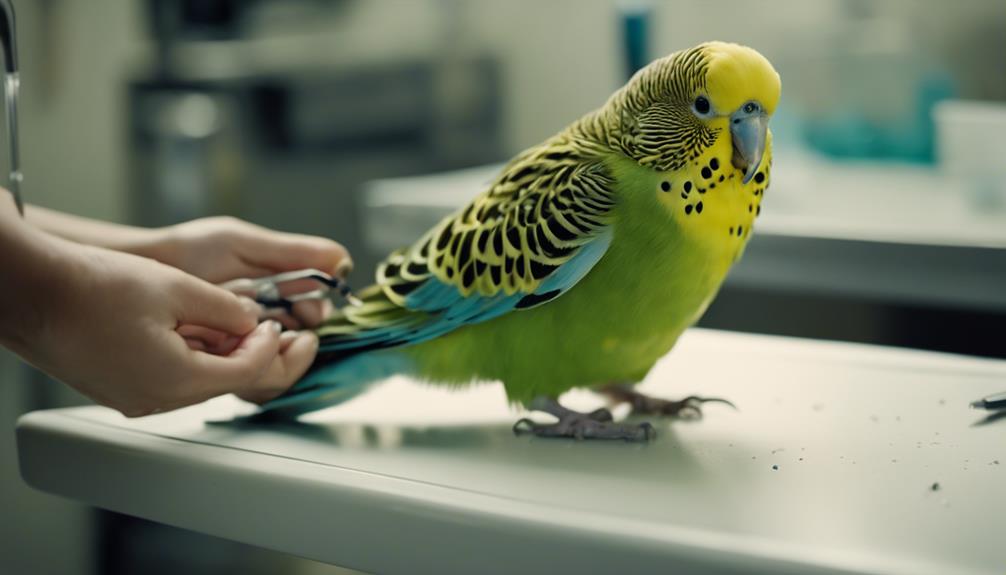
Female budgerigars have specific health care needs that differ from their male counterparts, requiring tailored care to support their well-being and longevity. Understanding female budgies’ reproductive cycles is crucial, as these involve hormonal fluctuations impacting behavior and well-being. It’s essential to provide a balanced diet rich in nutrients to support reproductive health and prevent deficiencies during egg-laying periods.
Regular veterinary check-ups are recommended to monitor the reproductive system and address issues promptly. Providing a safe and comfortable nesting area is vital during the breeding season. Monitoring weight, behavior, and egg production can help detect health concerns early. By being attentive to their unique needs, female budgerigars can lead healthy lives in captivity.
Frequently Asked Questions
Can Male and Female Budgerigars Be Kept Together in the Same Cage?
In general, male and female budgerigars can be kept together in the same cage. However, it’s essential to monitor cage dynamics and social behavior to ensure compatibility. Mixed genders may experience challenges, but with proper care, they can coexist harmoniously.
Are There Any Specific Training Techniques That Work Better for Male Budgerigars Compared to Female Budgerigars?
When training budgerigars, it’s essential to consider gender-specific training methods due to behavioral differences. Male budgerigars may respond better to certain techniques, such as target training, while females might excel with socialization exercises. Experimentation is key.
How Do Male and Female Budgerigars Respond to Being Handled or Petted by Their Owners?
When handling preferences, male budgerigars may be more accepting of physical contact initially, while females might require more trust building. Socialization differences can impact bonding techniques, with males often displaying more playful behaviors and females exhibiting nurturing tendencies.
Do Male and Female Budgerigars Have Different Vocalizations or Sounds They Make?
Male and female budgerigars exhibit distinct vocalization patterns. Males typically have a more varied and complex repertoire, using sounds to attract mates and communicate dominance. Females tend to have simpler calls used for social interactions and bonding within the flock.
Are There Any Differences in the Way Male and Female Budgerigars Interact With Other Pets in the Household?
When it comes to social dynamics and playtime, male and female budgerigars both exhibit unique traits. They showcase compatibility and establish hierarchies with other pets in the household. Understanding these interactions can enrich their overall well-being.




